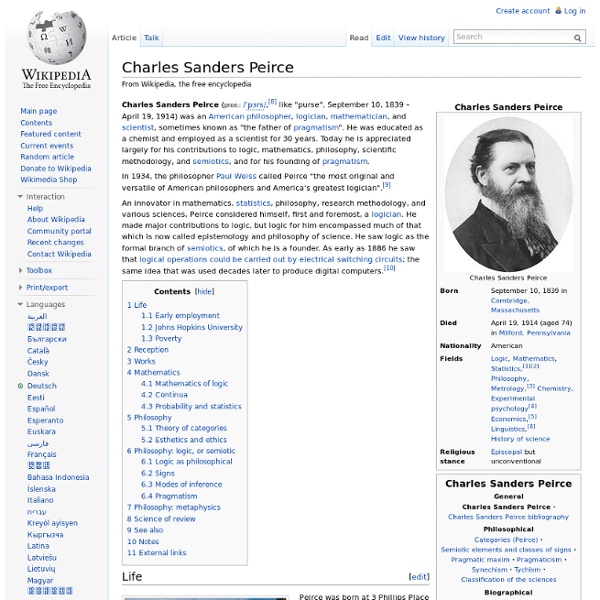Charles Sanders Peirce

Century Dictionary
First alphabetical page of The Century Dictionary and Cyclopedia After Whitney's death in 1894, supplementary volumes were published under Smith's supervision, including, The Century Cyclopedia of Names (1894) and The Century Atlas (1897). A two-volume Supplement of new vocabulary, published in 1909, completed the dictionary. The completed dictionary contained over 500,000 entries, more than Webster's New International or Funk and Wagnalls New Standard, the largest other dictionaries of the period. Although the dictionary was never again revised or expanded, an abridged edition with new words, The New Century Dictionary (edited by H.G. The Century Dictionary was admired for the quality of its entries, the craftsmanship in its design, typography, and binding, and its excellent illustrations. Sources[edit] Adams, James Truslow. External links[edit]
PEP UQAM- Peirce Edition Project (UQAM)
The mission of the Peirce edition Project (UQÀM) is to prepare the critical edition of texts written by Peirce between 1883 and 1909 for the Century Dictionary . The selection will represent the core of volume 7 of the Writings of Charles S. Peirce: A Chronological Edition . The project is directed by François Latraverse, with the steady collaboration of David Lachance, Jean Philippe Dell'Aniello, Marc Guastavino, Jérôme Vogel, Hélène Garcia, Jean-Marie Chevalier, Gwennaël Bricteux, Vincent Motard-Côté, Léane Sirois, Martin Lefebvre, Mathieu Marion, Céline Poisson, Jean-Guy Meunier, Paul Forster and André De Tienne.
Related:
Related:



